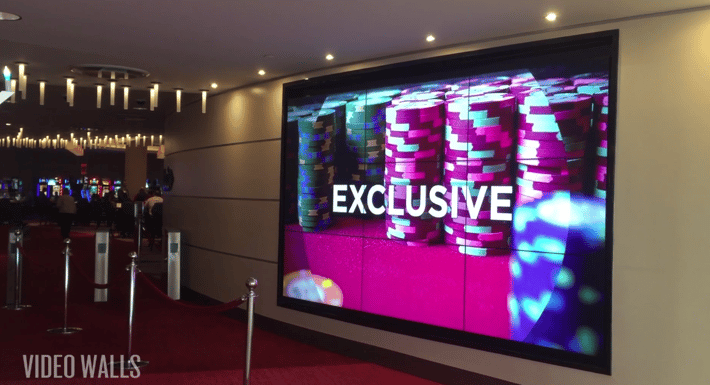By Richard Slawsky contributor, Digital Signage Today
Video walls are becoming increasingly popular as a way to attract and engage customers. They draw people in, immersing them in a brand or experience.
And with the increased adoption of video walls comes fresh possibilities for content creation. Customers are expecting video walls to be bigger and more eye-catching than ever before. With new technology such as 4K, fine-pitch LED and OLED taking a bigger market share, the content possibilities are growing dramatically.
Video walls are more than just a form of entertainment, though. They are also a prime way to combine art and information to communicate with consumers in a way not possible with single screens alone.
“Video walls can redefine interior spaces and offer a new, dynamic way of delivering informative and artistic content,” said Todd Rickenbach, Operations Manager at Allentown, Pennsylvania-based digital signage content design agency, Render Impact.
“Artistic content can be taken to an entirely new level with 4K+ video walls,” Rickenbach said. “The sky is the limit and designers can use vibrant colors, textures, compositing and effects to create truly captivating motifs.”

Challenges & opportunities
Digital signage deployers are clearly seeing the power of video walls.
According to research from Chicago-based research firm Markets and Markets, the size of the video wall market is expected to top $18 billion by 2020, more than quadruple the $4.1 billion market size in 2013. Newer applications and uses are expected to be one of the main drivers of market growth during that time, along with their growing use in the hospitality market.
Marketing campaigns can be brought to life on video walls in a way not possible with other media. Video walls afford the opportunity for designers to create an immersive experience due to their sheer size.
MotorCity Casino Hotel in Detroit, for example, worked with Render Impact to create a feeling of live, contemporary life with its recently debuted casino entrance 4K video walls. The casino hotel used three-dimensional computer animation to have a waterfall fall over and interact with their logo as one of the featured content pieces for the new video walls.
Render Impact’s designers worked with MotorCity’s marketing department and created a steel blue waterfall that pours down the wall over the casino’s logo and appears as if it is interacting with the surroundings, creating a powerful brand message. A second video features smoke clouds that play and intertwine with one another on the screen; liquid that flows in slow motion with droplets interacting and separating; crystal pieces that slowly shatter apart from one another; and light particles that form the casino building exterior then zoom out to show the world from outer space. The video walls underscore the idea that MotorCity Casino Hotel is luxurious, exciting and technology-driven.
Other casinos around the country, along with hotels, restaurants and retail outlets are also adopting video walls to create an immersive experience for guests. In early 2016, the Westgate Las Vegas Resort & Casino unveiled what it touts as the world’s largest LED video wall in its “Superbook” room. The wall is 20 feet tall and 220 feet wide, and is being used to create a stadium-like experience in the sports book area of the casino. The wall features dozens of video windows showing a variety of sporting events, scoreboards and news tickers.

In both of these examples, and more, the video walls serve as the artistic centerpiece of the space in which they are located, drawing the attention of viewers. At the same time, they communicate a powerful, long-lasting message about the offerings of that location.
To expand the power of the video wall, techniques such as day-parting are being incorporated to target a certain audience on a certain day or time of day. If a resort, for example, is using a video wall they can use day-parting to play content related to their buffet during the lunch and dinner times. At night, then can play content related to their bars and music venues.


